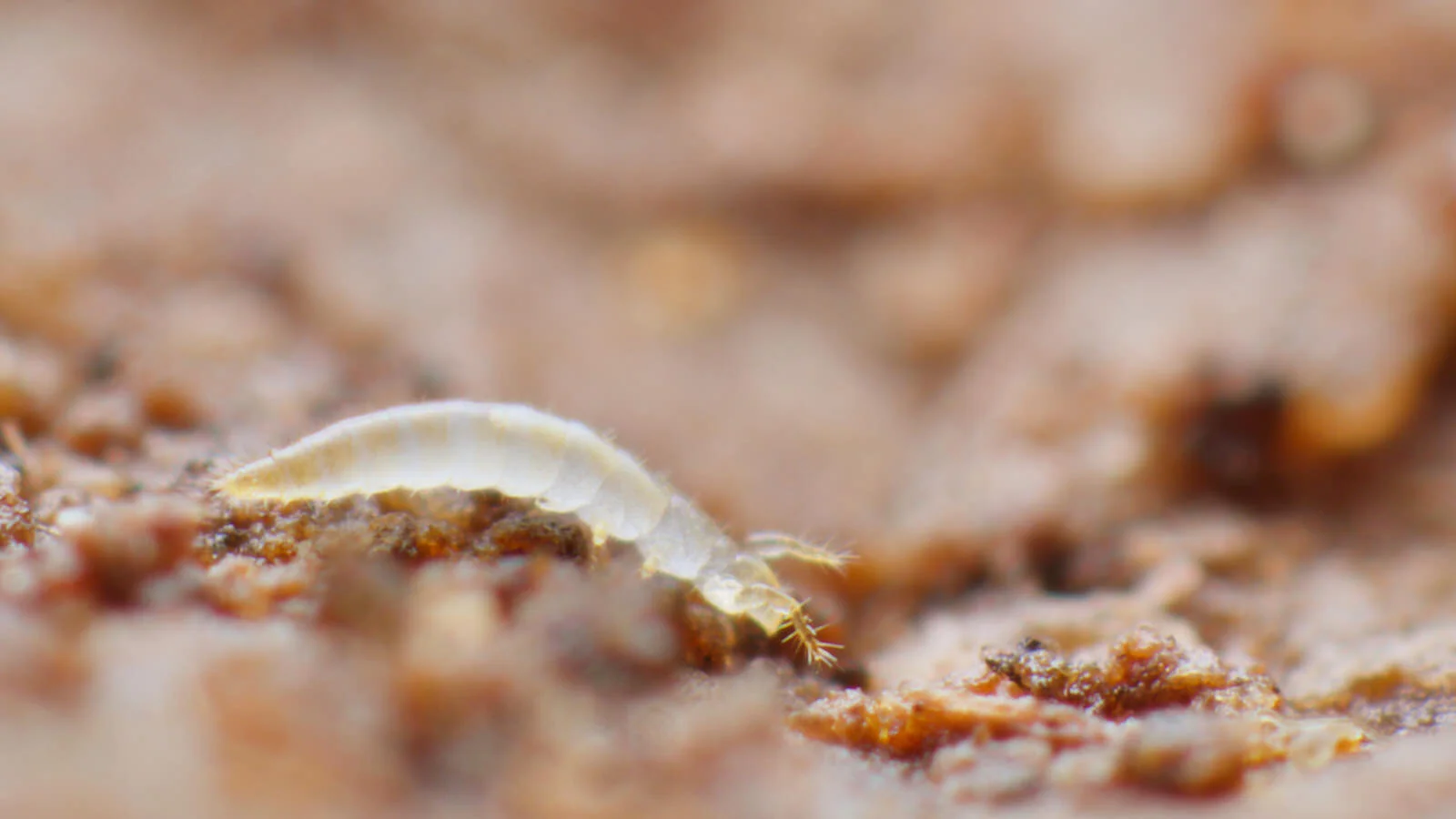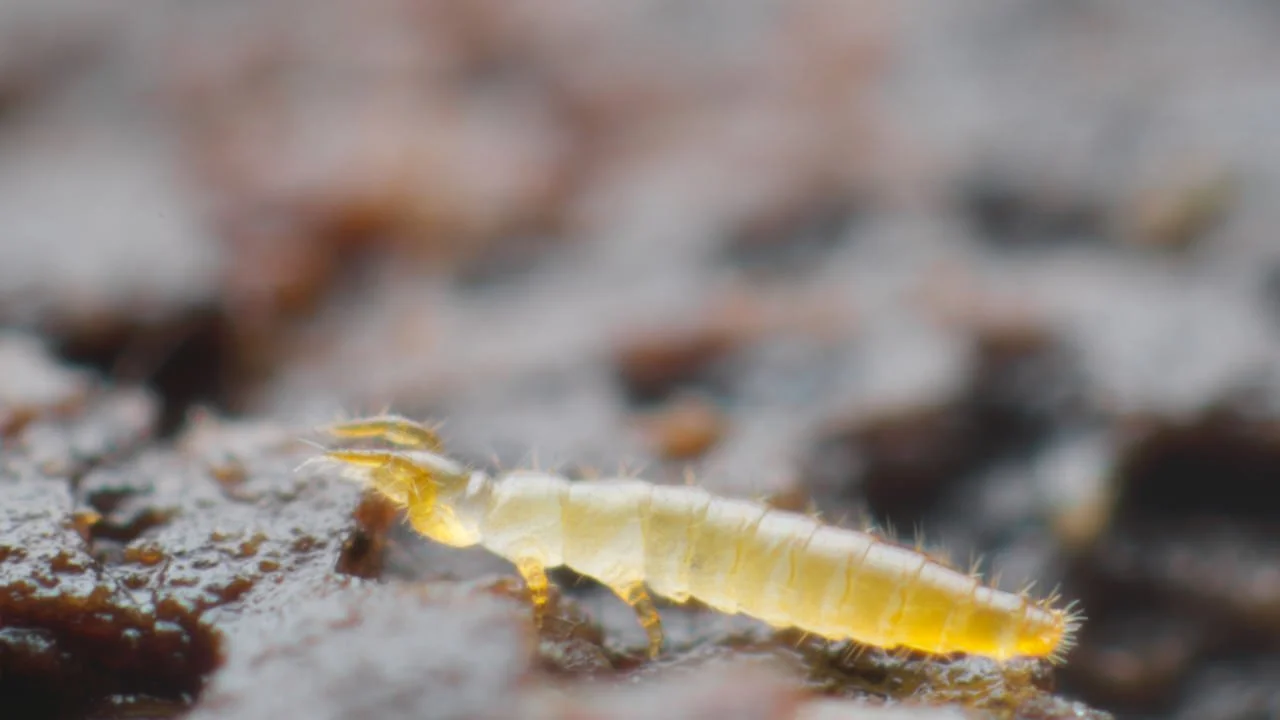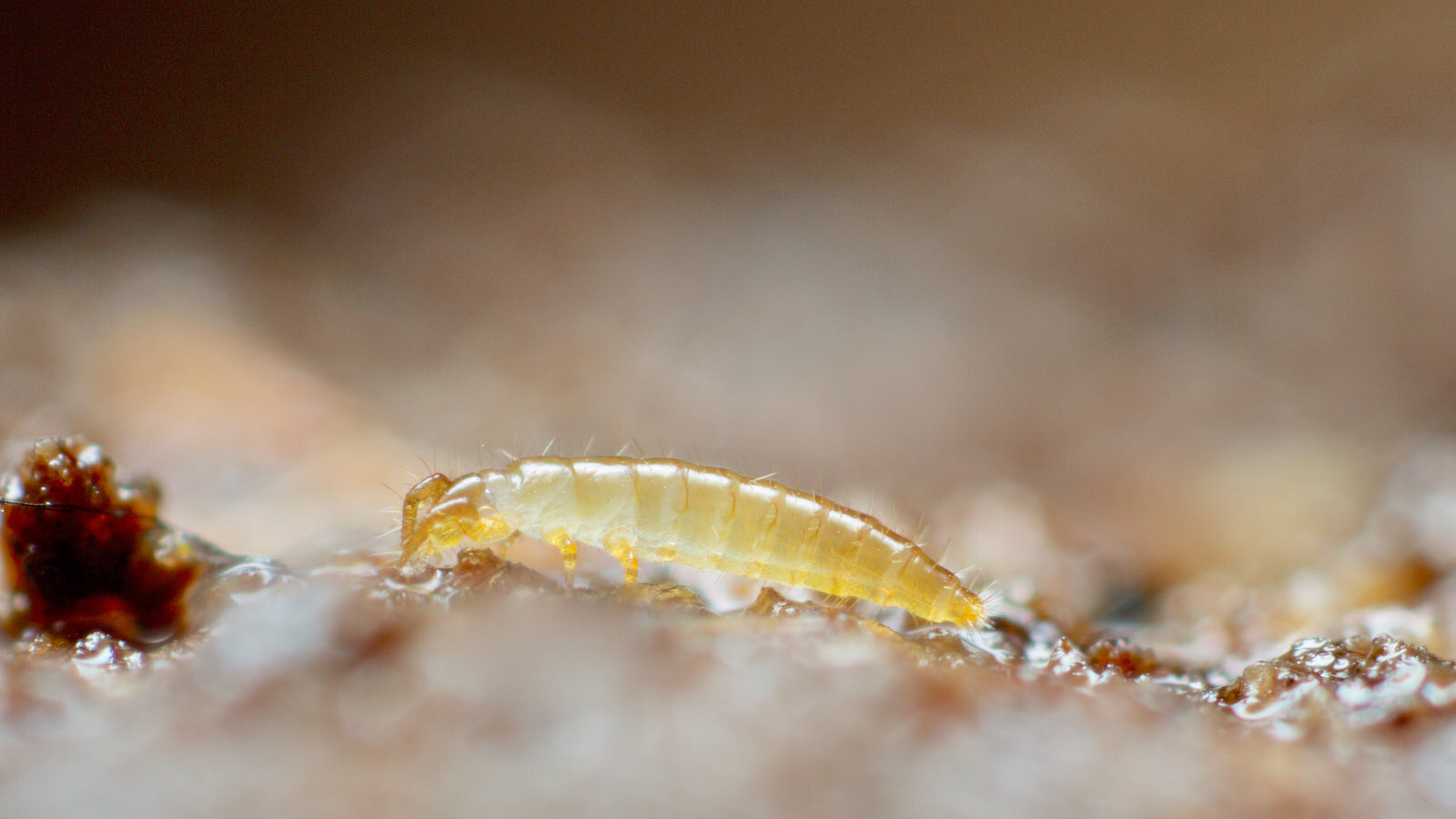
All about Protura-
the coneheads
Proturans, also known as coneheads and telsontails are seldom seen soil animals, under 2mm long. They lack pigment, wings, eyes and antennae and are considered to be an ancient sister group to insects, alongside Collembola and Diplura. But the data collected so far has been ambiguous. Some studies suggest that all of the Entognatha are more closely related genetically to crustaceans than Hexapoda. Other studies found that while Protura seemed to have followed its own separate lineage, Collembola and Diplura share a slightly closer relationship with Hexapoda and the insects. And proturans and diplurans have extra styli- kind of proto legs so they are not technically hexapods either. What is clear is that the origins of the Entognatha are bloody complicated.
Even twenty years ago, Collembola, Diplura and Protura were still considered to be insects. But adding cladistics and molecular evidence to the still useful technique of morphological classification meant it necessary to move them out of the Insecta monophyly and into a placeholder class, the Entognatha, due to a sharing similar internal mouthparts.
The three do share some other characteristics, but they also differ hugely, suggesting that they may not even be particularly related to each other either, meaning that even the class of Entognatha will have to be dissolved. My feeling is that eventually, taxonomists will have to give in to the inevitable and finally let Protura, Diplura and Collembola have their own classes. Even a casual observation of the three together offers little similarity between them other than size and a shared habitat.
A Protura species from New Zealand
They have two common names: ‘coneheads’, due obviously to their unusual, cone-shaped head, and ‘telsontails’, as their post-abdominal segment is known as a telson. Proturans are the only hexapod to have one. It is constantly invaginated into the pre abdomen, leading to a pulsing action as the proturan moves, It is possible that this has a cooling function. The pulsing also increases when the animal is under stress or threatened.
Little is known about the lives of proturans. Partly because of the lack of interested biologists, partly due to the difficulty of observing them in the wild and their >1.5mm size. They're rather fascinating to watch if you can find them. The easiest place is on the underside of moist, flattened stones. They stalk across the surface like a predatory sleepwalker. They look so attack-ready that it's easy to presume that they spend their time assaulting Collembola for fun. But instead, they delicately feed on mycorrhizal hyphae, piercing with their styliform mouthparts.
The proturan in the photo below is sucking into an undefined something. You can just make out its extended mouthparts. Proturans can live for at least seven weeks without eating, which is utterly remarkable for such a tiny and complex animal.
A proturan eating.
Proturan, woodland, Wells, Somerset, UK
They can be incredibly numerous in the top layers of certain types of temperate forest soils, as well as leaf litter, moss, tree bark, ant colonies and bird nests.
Proturans are very distinctive, with their their front legs raised in the air as they walk, gently flicking in the air or tentatively touching the ground as they walk. They are almost impossible to spot with a hand lens due to their slender profile and almost see-through body. They have two peculiar pseudoculi, eye-like organs that serve some unknown purpose. Their protarsi, five-segmented front legs, have adapted to function as antennae. The protarsi are covered in five different sorts of sensilla and sensory hairs, with others occurring over their entire body. Having such a range of different hairs most certainly aids in types of chemical, vibrational, humidity and temperature sensing.
Proturan, Dulcote woodlands, Somerset, UK.
Their adaption of their front two legs into sensing tools echoes a similar though unrelated adaption by some of the prostigmatan and mesostigmatan mites. In effect, all proturans are quadrupeds, having lost the ability to support their tiny weight on the front two.
Proturans also have curious appendages called styli on the first three segments of their abdomens. These are considered to be vestigial legs, a left-over from some unknown, ancient ancestor. Diplurans, Archaeognatha and many members of Zygentoma also have styli, although proturans have no ability to use them for locomotion. In the photo below, the first abdominal appendage is clearly visible.
A proturan, running
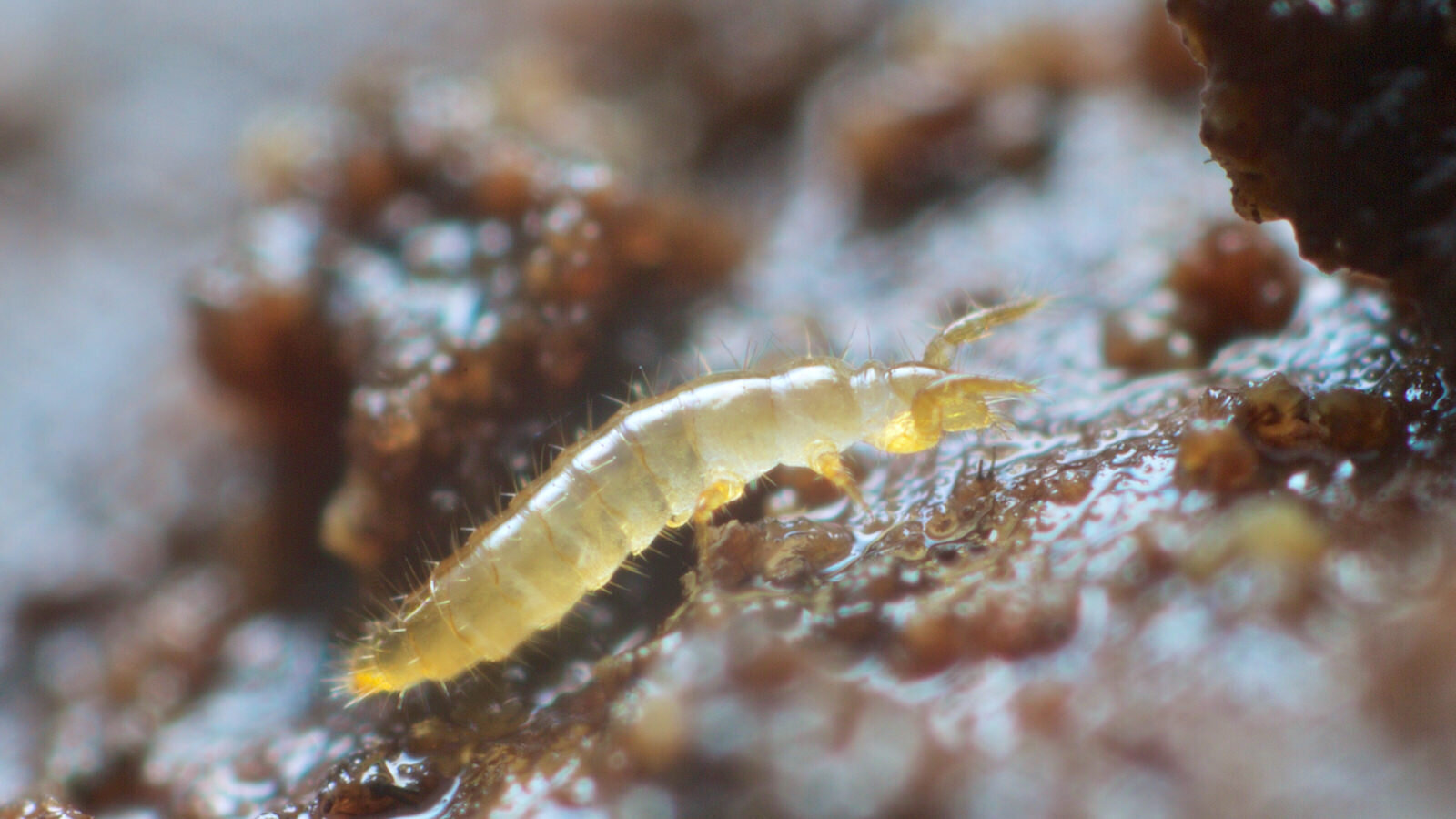
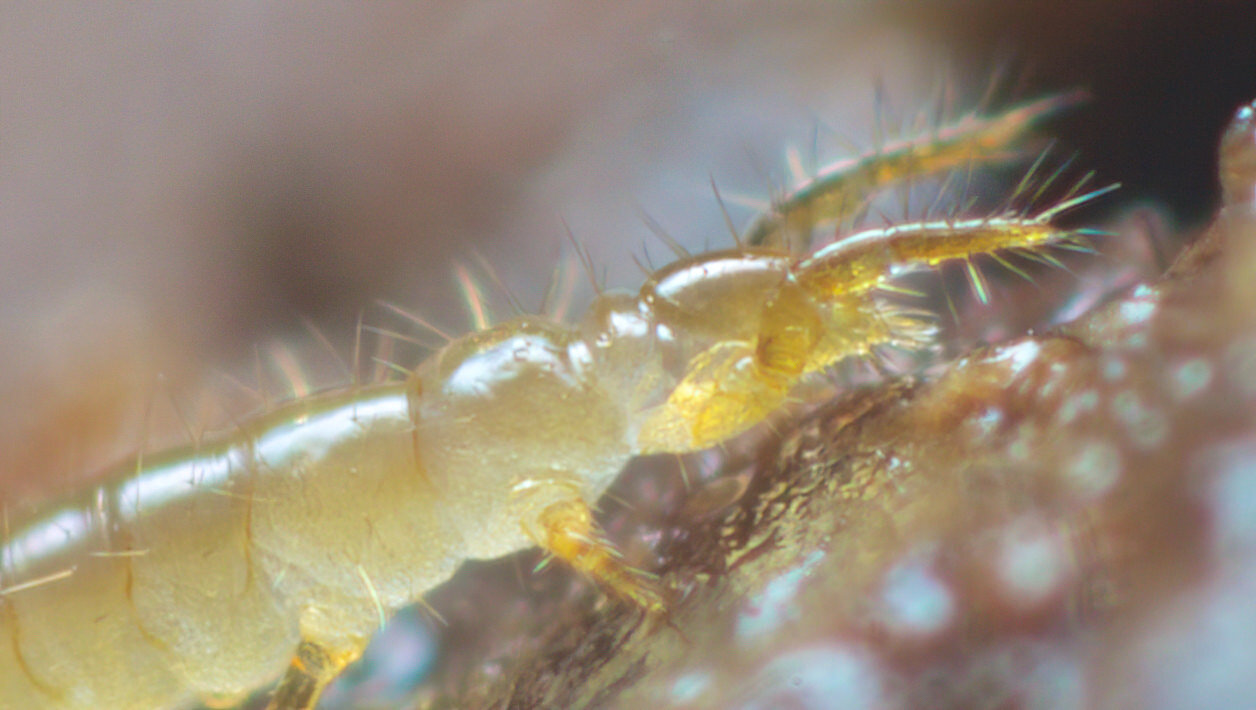
Proturans also have a growth pattern unique amongst the hexapods, called anamorphosis. When hatched, the first instar looks like a miniature adult but has only nine abdominal segments, which increases over subsequent moults to the adult's full twelve. The styli are very pronounced in the juveniles.
Proturan first instar, Compton Dundon, under stone, December 4th 2017
In the video above it's possible to watch their strange walk, as well as the curious pulsing of the telson, unique to proturans.
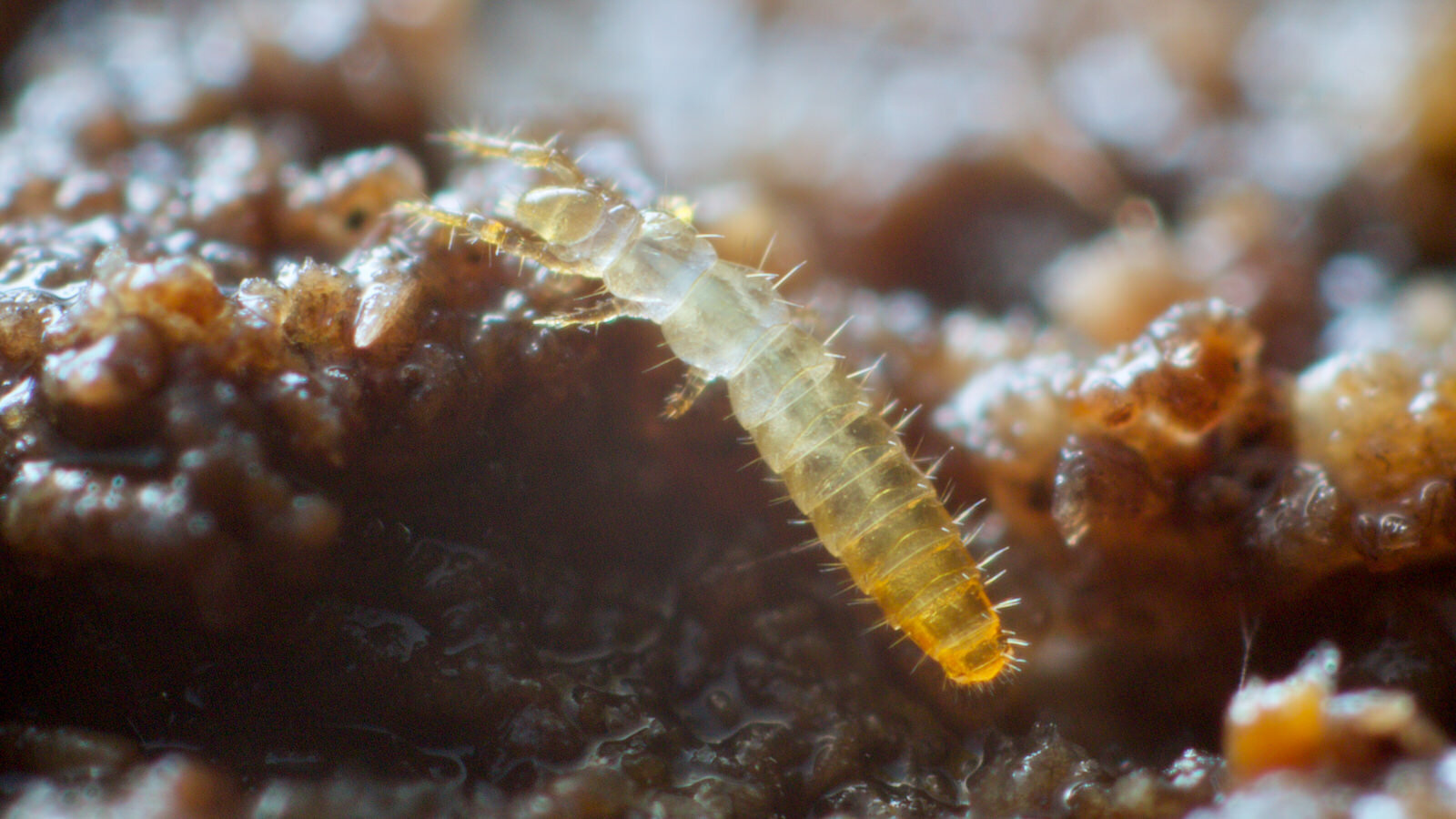
The photo below shows a New Zealand proturan in a defensive posture, after not being happy with being photographed, raising its abdomen with its pulsing telson to warn off possible predators (me). In 2010, Hansen, Bernard and Moulton recorded a prolonged interaction between a proturan, Acerentulus confinis and a springtail. The proturan, after initially raising its abdomen, released a defensive sticky liquid from gland openings on the eighth abdominal segment. Anthony Wooten in ‘Insects of the World’ (1984) also mentioned this habit. This is likely to be a common behaviour but as proturans are rarely studied, the literature on this subject is rather limited.

